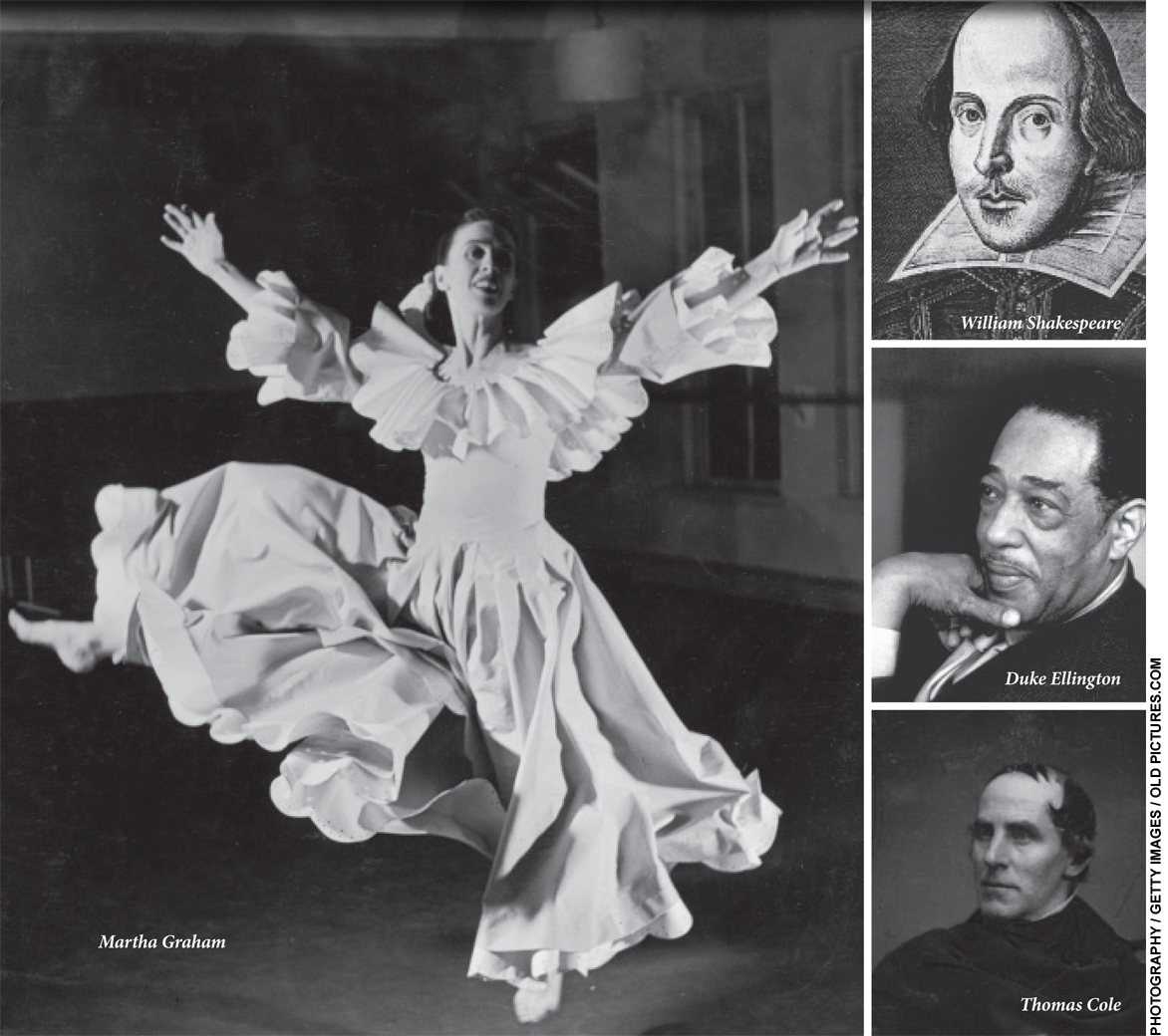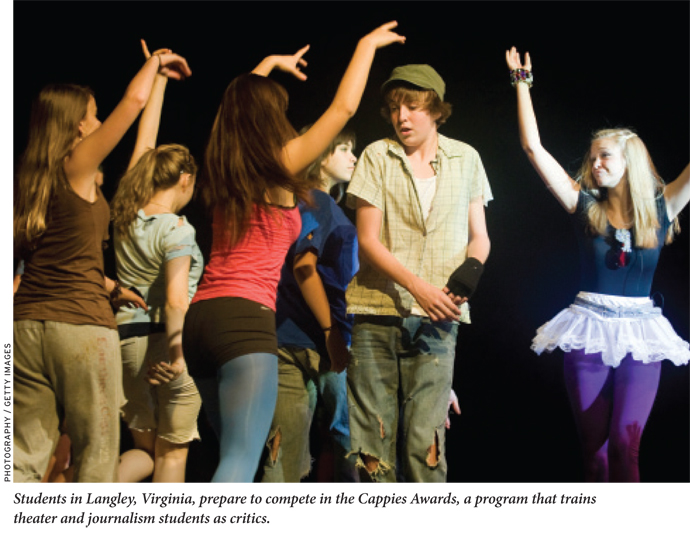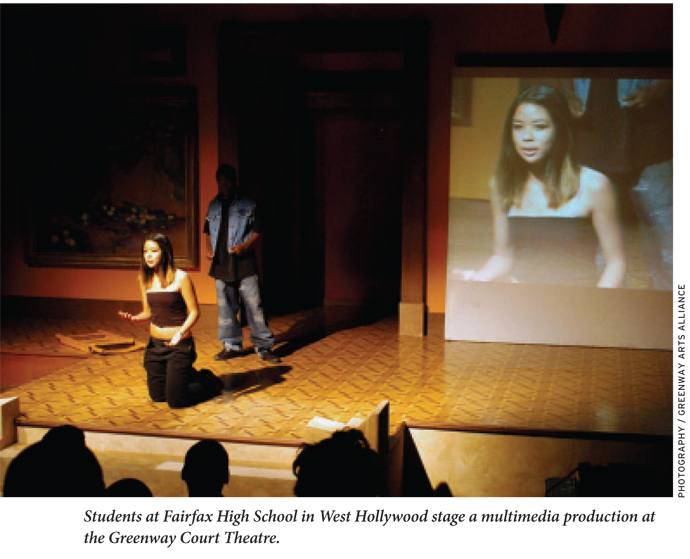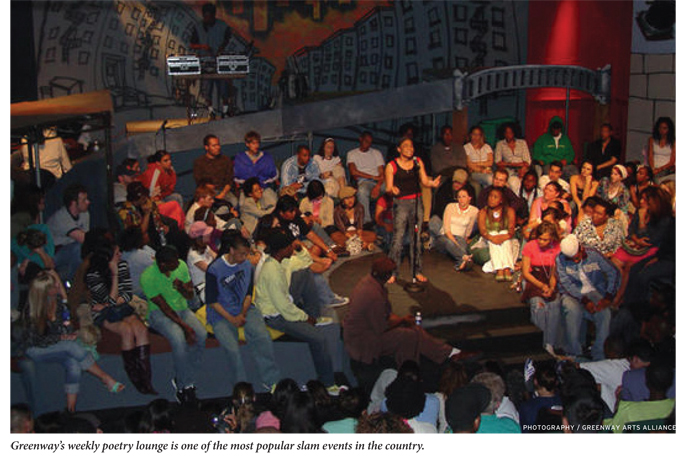
Every chairman of the National Endowment for the Arts must advocate for arts education. The arts need a voice in power, say people in the field, someone in the corridors of influence to argue the benefits of teaching the nation’s students about classical and jazz music, ballet, and sculpture. With No Child Left Behind (NCLB) emphasizing math and reading, business and manufacturing leaders calling for workplace readiness in our graduates, and politicians citing lagging international competitiveness in science and math, the Arts Endowment chairman must utilize the bully pulpit more than ever before. Dance, music, theater, and visual arts show up ever further down the priority ladder, and arts educators feel that they must fight to maintain even a toehold in the curriculum. The Arts Endowment chairman, they insist, must help.
It is no surprise, then, that in a November 2009 profile in the Wall Street Journal, chairman of the National Endowment for the Arts Rocco Landesman offers pointed remarks when arts education comes up. Examine closely what he singles out about the field:
When [Landesman] starts talking about his ideas for integrating the arts in education, his rhetoric becomes less bipartisan: “We’re going to try to move forward all the kids who were left behind by ‘No Child Left Behind’—the kids who have talent or a passion or an idiosyncratic perspective. Those kids are important too and they should have a place in society. It’s very often the arts that catches them.”
The emphasis falls on the unusual student, the difficult kid, not on the arts as a subject for study. Landesman doesn’t defend arts education as a rigorous discipline that builds concentration and requires practice, practice, practice. Nor does he say, We need arts education to keep alive the legacy of American art—Thomas Cole, Martha Graham, Duke Ellington… He doesn’t highlight the provocative stuff with something like, We need arts education to train young people to comprehend innovative, boundary-breaking art. Instead, the purpose is salvation. Some students don’t fit the NCLB regime and other subjects don’t inspire them. Talented but offbeat, they sulk through algebra, act up in the cafeteria, and drop out of school. The arts “catch” them and pull them back, turning a sinking ego on the margins into a creative citizen with “a place in society.”

Saving Kids with Art
To educators outside the arts field, it sounds like an odd approach to a school subject. If you want to advocate a field, you have to justify it as a discipline. It has to form a body of knowledge and skills that students study at least partly for its own sake. In the case of the arts, a graduated curriculum would incorporate technical skills and art history and theory, just as English language arts integrate literacy skills and the lineages of English, American, and world literatures. Yes, arts learning may have social and moral and professional benefits, but if people don’t value the materials of the fields themselves—if they can’t say that if High School X doesn’t acquaint students with Renaissance painting, classical music, and modern dance, its graduates will be undereducated—then arts educators lose in the competition for funds and hours in the day. Arts education remains an extracurricular, and school administrators focused on math and reading can push it aside: The arts are fine, so let kids who are interested in them study in an afterschool program like band practice.
The arts-saves-kids rationale crops up frequently near the centers of political power. I heard it repeated time and again while working on arts education policy at the Arts Endowment from 2003 to 2005. In gatherings such as the thrice-yearly meetings hosted by the Arts Education Partnership (AEP), a venture funded by the Arts Endowment and the U.S. Department of Education, arts education directors at state arts councils, officers at foundations, community arts school leaders, and various education-school professors outlined programs and research that related arts in classrooms directly to students in classrooms, especially to low-income, minority, at-risk, and underserved populations. Participants tended not to be classroom teachers, but to come from a network of public agencies, nonprofits, and academic centers, such as the Arts in Education Program at Harvard University. Their job was promotion, not instruction, their audience funders and politicians and school administrators, not students. They didn’t talk much about the arts canon (Shakespeare, Beethoven, etc.) or the interpretation of forms and contents (how to understand ancient tragedy, modern dance, etc.). Nor did they offer practical strategies for teachers and administrators who want to maintain the arts but face budget cuts and faceless bureaucracies. Instead, they talked about where to find money, how to build alliances, react to new policies, and firm up political support. And their preferred mode of vindication was to cast arts education as an agent of social change and individual transformation. As Dick Deasy, director of the Partnership (who retired in 2008), liked to say, “Teachers don’t teach a subject—they teach kids.”
In 2004, for instance, the Arts Endowment sponsored a summer institute organized by the Ohio Arts Council in Dayton. The stated aim was to bring educators from around the state together to hear about ways of strengthening arts curricula in schools. The headline speaker the first day was Harvard professor Jessica Hoffman Davis, who gave a rousing summary of what arts learning does for kids, stating at one point that the arts, among other things, allow schools to get away from letter grades. In the breakout sessions, participants had a common reply: “That was great, but we already believe in the arts. We need to find more classrooms, more resources, more money!”
In such discussions, the social dimension, the salvation purpose, overrode more mundane concerns. In a plenary session of the September 2003 AEP forum at Lincoln Center in New York, Kurt Wootton of Brown University offered a representative vignette in histrionic detail. After asking everybody in the room to say hello to people sitting nearby and to explain why they were there, he illustrated why the arts are “uniquely positioned to create social opportunities for learning.” (The address is reproduced on AEP’s web site in You Want to Be a Part of Everything: The Arts, Community, and Learning.) His proof came in the form of the story of Carlos, “a real gangster.” According to one of his teachers, Carlos was “the bad boy of the neighborhood,” a tough kid who “didn’t take s— from anyone.” He spent his first two years of high school on suspension, in detention, and now and then in class. Teachers dreaded his presence and administrators threw up their hands.
But in English class, something special happened. Carlos read at a 5th-grade level, but in discussions of Othello and Of Mice and Men, “he always had something interesting, and more often comical, to add to the class.” As the year progressed, his commitment did, too. With the help of a visiting theater artist, the students began to design and rehearse a pastiche of scenes from works they had read along with accounts from their own lives. The year would culminate in a schoolwide performance.
After three weeks of rehearsals, the teacher realized, Carlos had not missed a single session. Amazing, but even more so was what the teacher noticed later that day on the school’s daily attendance sheet. At the top of the “out of school suspension” list stood Carlos’s name! He had been kicked out of school for 10 days and had already served 7. And yet, his theater attendance was perfect. Carlos was sneaking back into school for theater.
When Wootten finished Carlos’s story, the room erupted in applause. It had all the ingredients of arts education advocacy and some enticing rebelliousness as well: a caring teacher who doesn’t give up on sliding students, a bad kid with a heart and a brain, a visiting artist in a tough school, and a minority group member defying administrative powers for love of theater.
One can appreciate the motivation that theater inspired in the young man, but the story had some dark undertones unrecognized in the speech. I asked one man who had to deal often with school administrators about what a principal would say. He shook his head and replied, “If a principal suspended a student, he did so for a pretty good reason, and if he knew that the kid was sneaking back onto the grounds, he’d be furious.”
One could hardly imagine the story stirring teachers in other fields, either, for it didn’t validate the arts as an academic discipline. A history teacher might respond, “You think the arts are more ‘motivational’ than history?” A math teacher might say, “Getting an ‘A’ on an algebra final raises self-esteem just as much as doing a self-portrait in art class.” If arts advocates instead emphasize the material—Shakespeare, major and minor chords, etc.—other teachers might show respect for their position, even if only to avoid appearing anti-art or anti-intellectual.
But such tactics don’t obtain at AEP or similar meetings. Turnaround tales and the like carry too much emotional freight to be displaced by talk of art history. Perhaps those engaged in arts ed lobbying believe that class- and race-based melodramas best sway elected officials and philanthropic organizations. Or perhaps they genuinely find the social and personal benefits of arts instruction more compelling than the arts themselves.

Arts as Discipline
When Dana Gioia took control of the Arts Endowment in January 2003, he didn’t share the arts-as-salvation outlook. One of the first things he told his education staff was of his preference for the Core Knowledge curriculum. While he believed that arts education enriches young people’s minds and transforms their lives, he felt that arts education had the strongest impact when students encountered lasting works of force and beauty. Students needed to experience great art—classic and contemporary—to acquire a solid foundation for their own general education and creativity. Otherwise, arts education would remain a sidelight in the curriculum, marginal and ineffective. How to impart the importance of artistic tradition without estranging arts ed advocates?
Gioia launched two reforms. First, he asked David Steiner, whom he hired to direct the Office of Arts Education, and me to review grant guidelines and suggest ways to strengthen their content requirements. We came up with a simple, but far-reaching stipulation: applicants for arts education grants had to align their programs with national or state standards and evaluate student learning by them. Awards to “Learning in the Arts for Children and Youth” must “apply national or state arts education standards,” we insisted, and “Students will be assessed according to national or state arts education standards.”
This created a challenge for arts organizations applying for Arts Endowment awards. Many of them had evaluation plans already in place, but those usually amounted to questionnaires issued to students at the end of the program that measured their attitudes and enjoyment. Or, they involved observations by evaluators who measured participation—for instance, how many kids talked in class. They did not focus on learning outcomes. From now on, they’d have to.
Arts advocates didn’t protest the change, in part because the field had already embraced outcome measures: the National Standards for Arts Education. The project was supported by grants from the National Endowment for the Arts, the U.S. Department of Education, and the National Endowment for the Humanities; a consortium of arts teacher organizations developed comprehensive standards for dance, theater, music, and the visual arts. Significantly, the designers weren’t primarily engaged in advocacy and fundraising. The final version appeared in 1994, and ever since it has garnered solid esteem, even though its premises run against the child-centered dramaturgy described above. Above all, arts educators wanted to establish strong disciplinary standards for their respective fields, both to regularize arts instruction across the country and to win higher recognition for the fields in the overall curriculum. Wisely, the designers insisted on the fundamental place of art history in the document. “In this document,” they wrote, “art means two things: (1) creative works and the process of producing them, and (2) the whole body of work in the art forms that make up the entire human intellectual and cultural heritage.” They define a “good education in the arts” as including “a thorough grounding in a basic body of knowledge.”
Furthermore, the standards “help ensure that the study of the arts is disciplined and well focused,” and that “arts instruction has a point of reference for assessing its results.” Assessments in the document follow not from social and personal impact, but from knowledge and skills. For instance, dance standards for grades 9–12 include this skill test: “Students choreograph a duet demonstrating an understanding of choreographic principles, processes, and structures”; and this content test: “Students create and answer twenty-five questions about dance and dancers prior to the twentieth century.” Music 9–12 includes this one: “Students classify by genre or style and by historical period or culture unfamiliar but representative aural examples of music and explain the reasoning behind their classifications.”
Gioia’s other reform was to develop separate arts education initiatives based squarely on art historical content. These programs were a primary instrument for building congressional consensus on Arts Endowment funding overall:
• Shakespeare in American Communities—tours by theatrical companies to smaller towns and thousands of schools across the United States to give performances of Shakespeare plays and run workshops for students. The program included a toolkit for English and theater teachers that contained educational materials; by 2008, the toolkit had been delivered to teachers of more than 24 million students.
• American Masterpieces: Three Centuries of Artistic Genius—a multidimensional program providing, among other things, educational materials to schools on the high-culture heritage of American art.
• Poetry Out Loud—modeled on the National Spelling Bee, a competition at the school, state, and national levels for high-school students, who memorize and recite a poem selected from a list of works both contemporary and classic, John Donne to Allen Ginsberg. Winners receive college scholarships and cash prizes for their schools’ libraries. In 2008, 250,000 students participated, and media coverage included a front-page story in USA Today and a segment on CBS News Sunday Morning.
The content of art and artistic tradition was at the center of each initiative. When Gioia first unveiled Poetry Out Loud, some state arts officers protested because it didn’t allow students to present their own compositions. Gioia’s reply was, in effect, “That isn’t what the competition is about.” With this particular effort, he wanted to encourage more reading of great poems, not more writing of adolescent verse.
Other figures in the arts education network considered Gioia’s programs tame and conservative, a Bush administration retreat from edgy and provocative art. On PBS NewsHour, for instance, after Gioia cited the Shakespeare initiative, interviewer Jeffrey Brown remarked, “Of course, for some people, though, this is the essence of ‘safe.’ Shakespeare? Who’s against Shakespeare?”
Gioia’s sage reply hinted at the social benefits of art while still honoring the art itself: “I could come up with 100 adjectives for Shakespeare before ‘safe’ would be the one I would offer [Regan and Goneril safe? The climax of Hamlet?]…. I was in a production in New York and we had all these New York insider theater people as half the audience and then in came 50 kids from the South Bronx. They were seeing Richard III. This production alarmed, excited. It was provocative. It wasn’t safe. It opened up possibilities in life and imagination to these kids that they weren’t getting otherwise.”
It helped, too, that the initiative gave 2,000 actors in 77 theater companies employment, and that Gioia was able to fund the Shakespeare project without taking any funds away from existing theater grant categories. Moreover, the Arts Endowment’s allocation from Congress grew steadily, jumping $20 million from 2007 to 2008 alone. Even if they bristled at the high-art, standards-based nature of Gioia’s approach, arts education advocates had to appreciate the resources he steered their way.

Beyond the Divide
For all the talk about why the arts are important and how they must be funded, the most successful support tactic I have encountered came from an actor/director in Los Angeles, Pierson Blaetz, co-director of Greenway Arts Alliance. The Greenway Arts Alliance runs a theater on the grounds of Fairfax High School, a large public school in the middle of West Hollywood. Living in the neighborhood during the’90s, Blaetz and co-founder Whitney Weston became interested in bringing more arts to students, but had to figure a way to provide the two necessities, space and money.
The project was an ingenious act of entrepreneurship. Blaetz and Weston surveyed the Fairfax High School campus and saw hidden value. First, they spotted an unused, roomy student social hall that lay separate from the main buildings and could serve as a venue for practice and performances. Second, they noted that the campus had an asset that was not in use on weekends: land. Fairfax High sits on expensive real estate right next to the L.A. Farmers Market. On Saturdays, while locals and tourists flooded the market, Blaetz noticed, acres of Fairfax High sat quiet and empty. What if, they proposed to school administrators, they leased and renovated the student hall and ran a weekend flea market at the school? They would charge a small admission fee, have merchants pay for spaces, let students work it, and pass the proceeds to the school. In return, Fairfax High would integrate Greenway into the curriculum and support its professional activities.
Administrators agreed, and now the Melrose Trading Post opens every Sunday in the Fairfax High parking lot with as many as 4,000 customers browsing some 200 stalls filled with antiques and collectibles. Meanwhile, students take courses at Greenway in drama, dance, and film, including theater classes for low-skilled 9th- and 10th-grade readers. Students also join Greenway in various productions after school, and their weekly Poetry Lounge is one of the most popular slam events in the country. While Greenway’s curriculum emphasizes its work with “at-risk high school students” and the power of the arts to “motivate youth” and impart “essential life skills,” it also aims at “skills, knowledge, and/or understanding of the arts consistent with national and state arts education standards.” In other words, while nodding to the social benefits of the program, Greenway recognizes the bottom line: demonstrated learning of the art, history, and practice of theater itself.
The Greenway Arts Alliance is an obvious model for arts education. Greenway has received support from public agencies, including the National Endowment for the Arts and the City of Los Angeles, but it has staked its continuance year-to-year on private enterprise. The program has thrived for years, and Fairfax High principal Ed Zubiate couldn’t be happier. Money comes in each week, affording the school needed resources, while the Fairfax curriculum expands nicely into the arts. In addition, 15 students have paid employment at the Melrose Trading Post each semester, and adults in the area with no connection to the school visit the grounds to attend performances (thus enhancing the school’s community profile). The relationship is symbiotic, not one of arts educators beseeching a few crumbs and class minutes.
Blaetz says that there are thousands of schools across the country ready for the same kind of creative economizing. A school might run a small farm that teaches students ecology and agriculture—and sells produce on weekends. The strategy transcends arts education and poses a logistical question about all schools. Why are they sitting on underused resources year after year, while scrambling to fund the arts and other programs?
When I shared Blaetz’s story with arts education advocates, not one of them followed up. I mentioned it to several attendees at AEP meetings and received blank glances in return. I’m not sure why, but I can guess. The people I encountered prosecute their mission by appealing directly to federal, state, and local governments and to nonprofit foundations for help. Blaetz went first to the free market. That approach is simply foreign to the network of arts ed folks hovering around public agencies and philanthropic groups.
That’s too bad, because what arts education needs in a time of fiscal crises are fewer advocates and more entrepreneurs.
Mark Bauerlein is professor of English at Emory University.


